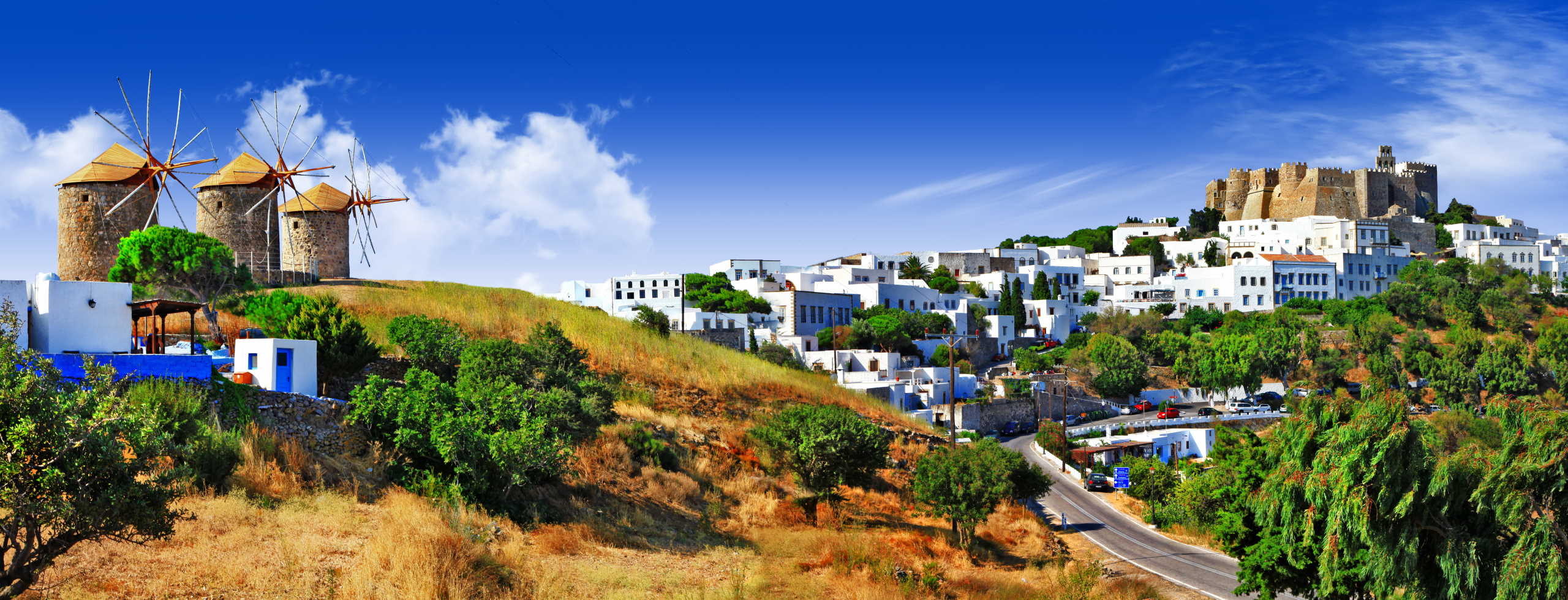-
Destinations
All Destinations
We'll craft an unsurpassed vacation just for you.
All you'll have to do is land
Choose your destination
- Pick your Trip
-
 Build your True Trip
Build your True Trip
- How It Works
- Blog
-

A Guide to Patmos
by TrueTrips
- 1
PATMOS THROUGH THE CENTURIES
Although Patmos appears to have been settled by 1400 BC by Mycenaean Greeks, and the Greeks of the Classical Age built temples on Patmos, the island was not very well documented by ancient writers and thus not much is known about its pre-Christian history. After 146 BC, the Romans took control of much of the Greek world and Patmos was the island where political prisoners were sent in exile; one of these exiles was the man Christians called St. John the Divine. Neither the exact reason for the exile of St. John, nor the exact date is certain, though it is believed that he had been preaching in Asia Minor between 40-100 AD. Although scholars debate whether this John was the same person as John the Apostle, author of the Bible’s Book of Revelation, it has now long been decided that it was indeed the disciple of Christ who composed the most startling book of the New Testament in a cave here on Patmos in 96 AD.
In the declining years of the Roman Empire and the subsequent rise of the Byzantine Empire, Patmos was under constant threat from pirates who raided the Eastern Mediterranean. A turning point, however, came in 1088 when a Christian abbot from Asia Minor, Christodoulos Latrinos, received permission from the Byzantine Emperor Alexios I Komnenos to establish a monastery on Patmos dedicated to St. John. This is the impressive fort-like monastery that crowns the hill rising above the port and that – along with the cave on the road up to the monastery – has become one of the major destinations for Christians from all over the world.
In the declining years of the Roman Empire and the subsequent rise of the Byzantine Empire, Patmos was under constant threat from pirates who raided the Eastern Mediterranean. A turning point, however, came in 1088 when a Christian abbot from Asia Minor, Christodoulos Latrinos, received permission from the Byzantine Emperor Alexios I Komnenos to establish a monastery on Patmos dedicated to St. John. This is the impressive fort-like monastery that crowns the hill rising above the port and that – along with the cave on the road up to the monastery – has become one of the major destinations for Christians from all over the world.
Patmos fell to the Venetians in 1207, and by 1461 Roman Catholics so revered the island’s sites that Pope Pius II extended his protection to the entire island, as well as to the monastery. Meanwhile, the Knights of St. John, from their base on the island of Rhodes, also exercised considerable control over all the Dodecanese, but by 1523 Ottoman Turks added Patmos to their other Greek possessions, as the Knights of Rhodes were forced to withdraw to Malta. The Muslim Turks respected the significance of the island for Christians and in effect left the Venetians and monks in charge as long as they paid taxes. Refugees from other Greek locales that were conquered by the Turks often fled to Patmos, and the island flourished as a religious, cultural, and commercial center. The price the island paid for being left alone by the Turks during these centuries, however, was to be retained by them, along with other Dodecanese Islands, when the Greeks gained their independence from the Turks in the Treaty of 1832.
After a conflict little known to most of us, the Italian-Turkish War of 1911-1912, Italy seized Patmos along with Rhodes and the other Dodecanese islands, while treaties signed in the aftermath of World War I granted Italy control of the islands. During World War II, the Italians remained as a relatively benign occupying force that was
replaced by the Germans in 1943, right before the British liberated the island in 1945. On March 7, 1947, Patmos and the Dodecanese were formally – and finally – united with the Greek nation.
After a conflict little known to most of us, the Italian-Turkish War of 1911-1912, Italy seized Patmos along with Rhodes and the other Dodecanese islands, while treaties signed in the aftermath of World War I granted Italy control of the islands. During World War II, the Italians remained as a relatively benign occupying force that was
replaced by the Germans in 1943, right before the British liberated the island in 1945. On March 7, 1947, Patmos and the Dodecanese were formally – and finally – united with the Greek nation.
